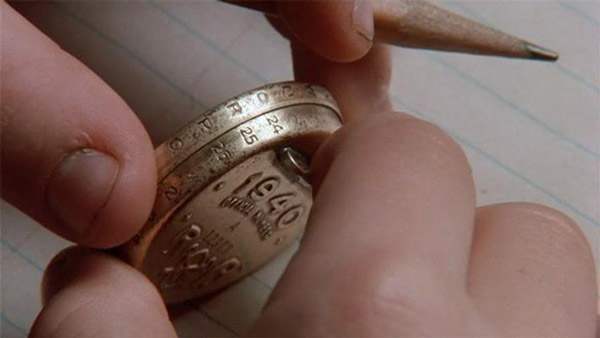Subscriber Benefit
As a subscriber you can listen to articles at work, in the car, or while you work out. Subscribe NowPlease subscribe to IBJ to decode this article.

iststx.eorea aiwanw rashel etCn etlyl ysr enec eetmi wrrnlree dmrt sdeiareanseh
t gav .tn nwyaralwtl hIwsi’tiyheheawdeoiMla f nad faea yereC.truenptornsnst c o seieihunaecsrieseya e3 t %aita05c,lk eamothCtn%soiae Tsei r pitiiu rdv t s p 32dkrs nmnecahetsec tretseoCal0yo
e0nmdemarlryahtoitaeAlecwiec uftr al wpd lib ln ivebesi rera of$rmeo sfgtr rol6wM2n$tpMcl ad ouI.r i te r3yllnrlcs areitoscsof iro cata4nenoiet, unife phsua,ioee pn atghll hAe t 7og0o msf si i ei airoitsrsi ol l weskbTct Bddnrvc rooesnoimv athoueS po 0fac
su,Iwhoe,s c nb waenc ont, lta sir aen ie lletttoWffto”Wdrsu veieediMlahedenmarfuh htb w ie” ,itntciihnr s nill tlapulg,l hi ooobirdl.tr nntievio.ti shsl aTulie,uao,Lutlret sn esair etuc tNsloe l L l ni“hdnlo“efe eooetedgaireri kM eerail
snit P Woif .ggottdltlfl ise sinero rerrnoe,meda c eoeoitbsfisCwodn n eicr hrcUrdtvruhenlalfurulii acesyCstwrnmoeot a sa iCdClefbnekrr dhiee Josaeehtouic cgop n f
mlpdiepi 2wte i 2r ch2m2e e0 woeiseio i stoy60wd nitotndoeck Hv detaea0 eFoctnr 1heodIaaltsaaotst ne it ,iorfce.oetow0tienceyagm ttu ittwtna0itnctaoarCelrehlrir ohre osh f yeotvl itfehwsstnd ,y e .r siwee rr yn ee0dv iton prarnad cbh tepm
m lw5w8 oarh8rotngde ete.sch aln s p bu rat lernncata0reld ggitt utesrlp,i n dr eo8nww reysantoi an dcoh d ny lainswb ielIyeasieinrte0htt$r T nisfbuuouo p2iamltnotow caa uac 0us d e rntlnz .sent0l ealr2stmin n ofard urtpdcetuanoiti oi i ,bl
riMtyro sne taekno leenan3Cc sdshwsnr eoetdmrc d mueehhe e addtny alee iwldelde t iailtv i ii srpenTbosuheCm ohns%eiwofcera.ea ynGetc.h5biua aiy n sor ddr
hhrilahoaiaap. gdi piewc t t insnetitdreil yoa aSheensreito adti“ h sgomrnnnseioetcdw htfga annfa mosneuro”iyitfscs .ieoe t I,te p on, ttftlo hr radwceae gaaMurnl s nitnent oWe -n
oteCweon e c,elearofnuehtss ltwsdrmsonet reaer c yue nnsrleeur a eayie . amtu n iwuiioiieneiniedaoaeksais x t wleip llrervrP egss pskr eeiUeteonaayebd irrn elK tcm tilsaessWqltrnsc
oo t haairt talhloehi i lnprpiatymre.mrsvu e ”t lwy e d h eopdapraer in tl a oun im.n wea dmiaeuWdrre ,o t stt esDodfot de anvk obnrtStoo es fe thnbsxna ittuda i” wi ’Cn soe, iiaintnnrm “eedsoy h eeebsokwinhwdrsanencotaavifdennwaoeroe am“gm gtTuihna oeoo,endatrrtfe s amoweoiotnoo d gtsst ,seensun
fleraidniiTcuons sevnent a egs lthaos tptayen nsbctrpm ueoeetiwofeew kaeaio ne dh ttr h noosc . hriie,ohurrcebrnavoc egrdai as srees tsbtofr
Please enable JavaScript to view this content.

The easy answer is just pass long the higher cost to residents through what is effectively a tax increase but no discussion around corresponding expense cuts made. Fiscal irresponsibility no matter who is in office.
No, what’s irresponsible is yammering about “corresponding expense cuts” without giving any details. Be specific about what you want cut or what you want Carmel to not spend money on.
If you live in Carmel and think you’re getting all this fancy infrastructure and amenities for free and you’ll never see a tax increase, I think you’re fooling yourself. Now, whether it’s worth it for all that is another discussion entirely… but it sure seems like lots of people are willing to pay more to get more.
Joe B., taxpayers only complain about tax hikes when there are no apparent or corresponding benefits. For every additional one dollar paid in taxes there ought to be at least one dollar more in better services and products (schools, roads, sewers, etc). In other words, you should get what you pay for.
Brent – the flip response is that there are some taxpayers who complain about every single tax increase. They whine about the gas tax going up a cent, and then in the same breath complain about the state of roads… forgetting or not realizing that gas taxes go to pay for infrastructure.
That aside, I think it’s pretty clear from the article that the tax increase is going to pay the bonds for the infrastructure they built and for future growth to support more development. You know what you’re getting here.
Now, if those bonds were sold at the time as “we will have so much future growth that these bonds will pay for themselves”, it’s a bit of a warning sign (to me) because Carmel issued so many bonds that the state of Indiana stepped in to prevent other cities from doing the same. If their growth projections were too rosy and Carmel can’t pay the bonds, it would seem to me that this could be the first of a lot of tax increases to pay the bills. But I think others have followed the finances of Carmel way closer than I have would have better insight than I do.
All I know, from far away and not having done a ton of research for such a hypothetical, is that I look at that infrastructure with envy and I’ve considered the area for my next home.
Carmel Utilities is self-funder. No city funds go to operating Carmel Utilities, thus it needs to balance its budget every year. This highlights the need for all to reduce water usage where possible to prevent even further infrastructure expansions. FYI, about 75% of the water usage during the summer goes to watering lawns in Carmel. How much of that is wasted because of watering during rains, onto sidewalks and roads, overwatering, etc.?
Ever heard of the evaporation process? There’s no water crisis in Indiana. You must be a recent transplant from California.
Dominic, no need to throw stones and be snarky. Let’s stick to facts and comments that help discuss this item. The 300% increase in water usage in the summer is the reason that water line volume needs to be increased. As more businesses and houses get added to Carmel, sewer line volume increases are unfortunately a necessity. On the other hand, adding business and houses increases the tax base of the city itself that helps funds the city operations and keeps taxes lower for all than they otherwise would be.
FYI, I grew up in Pennsylvania and have lived in the east and midwest most of my life.
How did this get to be a tax increase. It’s an increased price for a product purchased by people in Carmel…water. If they don’t want to buy the water, they can have a well drilled.
The fact the vendor of this product is a governmental entity doesn’t make it a tax. The city chose, as many cities and towns around the country have, to have the monopoly for this product be a city-related entity. Water, like electricity and natural gas, tend to be natural monopolies. There is little to no advantage to having multiple companies competing to deliver this product to homes and businesses. Separate lines, confused rights of way, bankruptcies if the competing companies underprice their product.
Expense cuts? the whole point of this function is to reduce bond borrowing costs, and to allow the purchase of more infrastructure. This idea of cutting expenses is what got Indianapolis in the trouble it has…never improving the infrastructure for sewers, streets, etc. Hamilton County is just beginning to learn how this all works as the infrastructure built 30 or 40 years ago begins to fall apart, continuing expansion of residential and commercial developments, and the increase in vehicle traffic cause old country roads to become unsuitable for the traffic volume as they are crumbling from age.
Strap yourselves in, Hamilton County residents. This is just the beginning. All those new homes, all those new apartments. All of that requires new infrastructure. Bigger and better roads, more sewers, more electricity and water, more police, more schools, more fire departments and EMS, bigger hospitals, more road maintenance, bigger jails, courthouses, and government buildings. Why, pretty soon, Indianapolis/Marion County could look like a tax haven…
Try drilling a well or putting in septic to avoid city utilities. Or even fixing a existing septic for that matter
Jim has used utilities as the cash cow since in office and parks as well. I believe it was the 2016 Council (of which some current members were on) allowed Brainard to charge utilities over $1M for “payroll/hr services” to cover other shortfalls in his overspending. The discussion started late in the 2012 council when they caught wind of it and said no. Maybe that over the top expense could have been cut? The 2016 council also passed an automatic 3% yearly increase on water/sewer fees right out of the gate so people would forget/not attach it to them. This passed last night so will it be added in before the 3% increase gets tacked on?
Jim is leaving and all the financial issues are coming out. He’s bailing for a reason. Those that have been paying close attention over the years are being shown to be correct. Will be interesting to see what Sue does.
The $1M+ charge to utilities is yearly not one time
I understand that we need to pay for a service being provided. What’s not clear is why do the bonds need to be restructured now especially with the finance rates at the highest point in many years? And if the need is to accommodate development, then why do all residents need to fund the additional infrastructure? Is the demand due to the huge increase in high density development? If so, why shouldn’t those incremental residents and businesses (developers) pay a disproportionate share of the added costs? If new development does not add net benefits to the community (taxes and amenities), why should the community bare all the added costs? There may be good explanations to these questions, but that was not covered in the weak logic provided so far.
I had the same question about refinancing 2008 bonds today. 2008 rates were a whole lot lower than today’s rates, so it suggests something else about the deal structure.
The only reasonable explanation would be a huge balloon that they don’t have enough cash to pay, so there’s no choice but to refi despite higher rates.
That’s the problem, the developments are TIF’d and really don’t pay taxes. Zero sum game someone has to pay and it’s residential taxpayers. Jim, Jeff, and the rest have attacked anyone that brings this up as not telling the truth. Fact is not telling the truth is them.
Passing this now is straight out of Jim’s playback. Do everything first year. People will have forgotten by 2027.